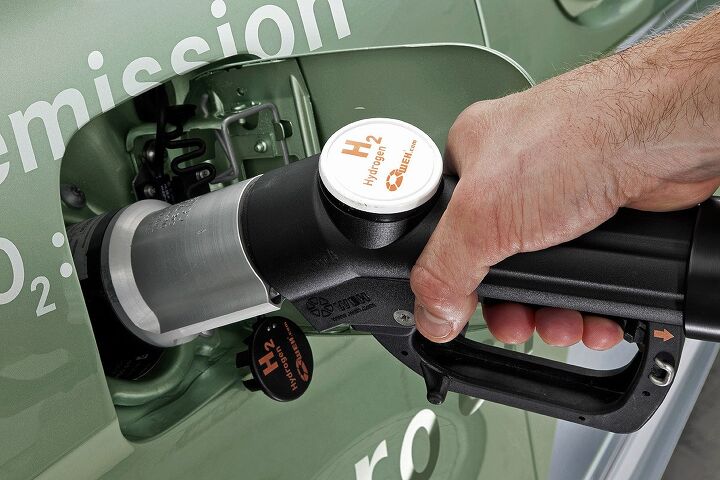Coronavirus Seems to Kill GM's Hydrogen Ambitions

Maybe the military will still be able to get one, but the cash-consuming coronavirus pandemic appears to have nixed any chance that a normal consumer will be able to slide into a fuel cell-powered General Motors vehicle anytime soon.
Good news for Honda, Toyota, and Hyundai?
Or maybe worthy of a big, fat yawn from our readers? Who friggin’ cares, you might be thinking — GM’s been chasing this unviable technology for years!
Indeed they have, going back the the 2000s, and financial constraints have now caught up to the stubbornly latent technology. Or perhaps GM just recognizes the pointlessness of pouring resources into a technology that, two decades later, is still only usable for those living near two U.S. cities?
In the automaker’s annual sustainability report, GM resolved to hold the course on its electrified future, but those consumer-bound electric motors will source their juice from big, big batteries — not mini, on-board powerplants.
As reported by CNBC‘s Michael Wayland, GM Chief Sustainability Officer Dane Parker admitted the change during a media call.
“We saw the importance of prioritizing our resources, particularly in the U.S. market to electric passenger vehicles,” Parker said, adding that the company’s green focus would henceforth be split between civilian and military/commercial customers.
Originally, GM planned to launch 20 EVs by 2023, one of which would be a hydrogen fuel cell vehicle. While GM still plans to foist electric vehicles on retail consumers en masse, underpinned by a new modular architecture and powered by in-house Ultium batteries, the company’s hydrogen team will now focus solely on military and commercial buyers. You’ll recall that GM Defense began rustling up interesting Chevrolet truck variants not too long ago.
That leaves players like Honda, Toyota, and Hyundai to continue carrying the hydrogen torch in the American retail market. BMW and Mercedes-Benz remain interested in the technology’s consumer applications, too. The average buyer, of course, might not be.
[Image: Daimler]

More by Steph Willems
Latest Car Reviews
Read moreLatest Product Reviews
Read moreRecent Comments
- Cprescott While this seems like good news, IIHS is a complete racket that arbitarily changes standards at a whim based on specious evidence. Once cars meet these standards, IIHS changes them so that most will fail so they get publicity. This is how they work. And I'm not even going into the fact that they are funded by the insurance companies....
- Cprescott Good old days of Volvo. Can't say tht about their current garbage.
- Cprescott Wasn't Heir Yutz affiliated with this company. He has the reverse midas touch.
- Master Baiter I actually received an engineering job offer from Fisker in early 2021. Glad I declined it...
- Bryan The simple fact that the Honda has a CVT & the Toyota doesn't was more than enough for me to pick the Toyota for both of my daughters.


































Comments
Join the conversation
The coronavirus has provided many companies with a perfectly good alibi to modify a course without scaring the markets. An error is averted yet everyone "saves face".
From what I've seen so far, hydrogen's biggest advantage is in commercial and civil services vehicles and not in privately-owned personal or family vehicles. The small size of most POVs means the amount of conversion grid area is limited, which limits the total output power of the vehicle itself. Add to this that the fuel, no matter how it is obtained, is likely to be far more expensive than wall-socket electricity, even when using a class 2 charger at home (commercial fast chargers will, of course, want as much profit as they can get away with.) So anything from roughly vehicle Class IV and up can probably be served better by hydrogen with its faster 'refueling' time and potentially longer range (depending on tank capacity.) I can see almost any major construction vehicle taking advantage of the massive torque electric motors offer while, like diesels, can run at a fixed output level for long-term operation. Railroads and OTR trucking--even commercial buses--can take advantage of the capability and realize more efficient overall operations, especially when supported by a battery pack for surge demand and regenerative braking (something flat wasted in modern railroading at the moment.)